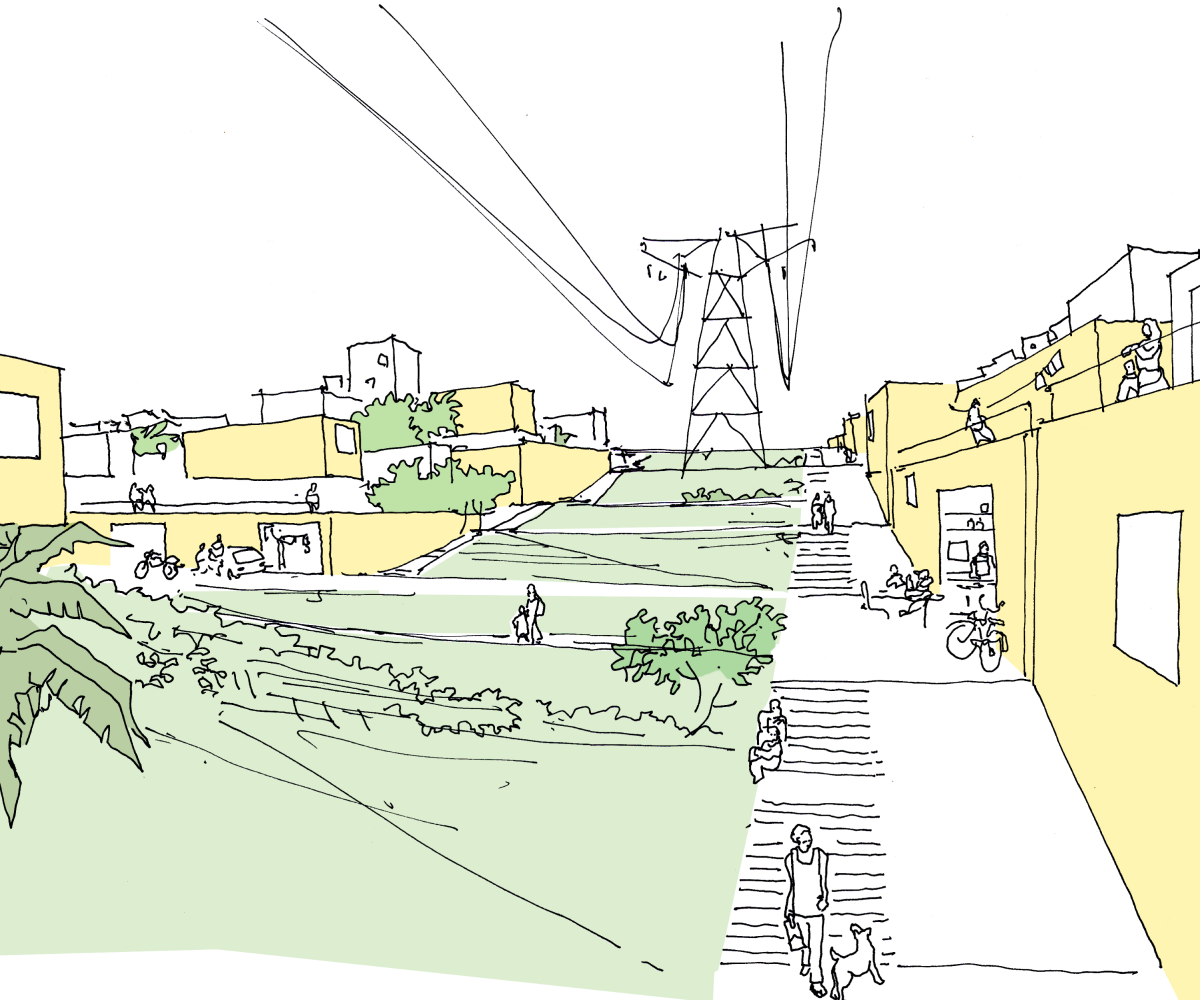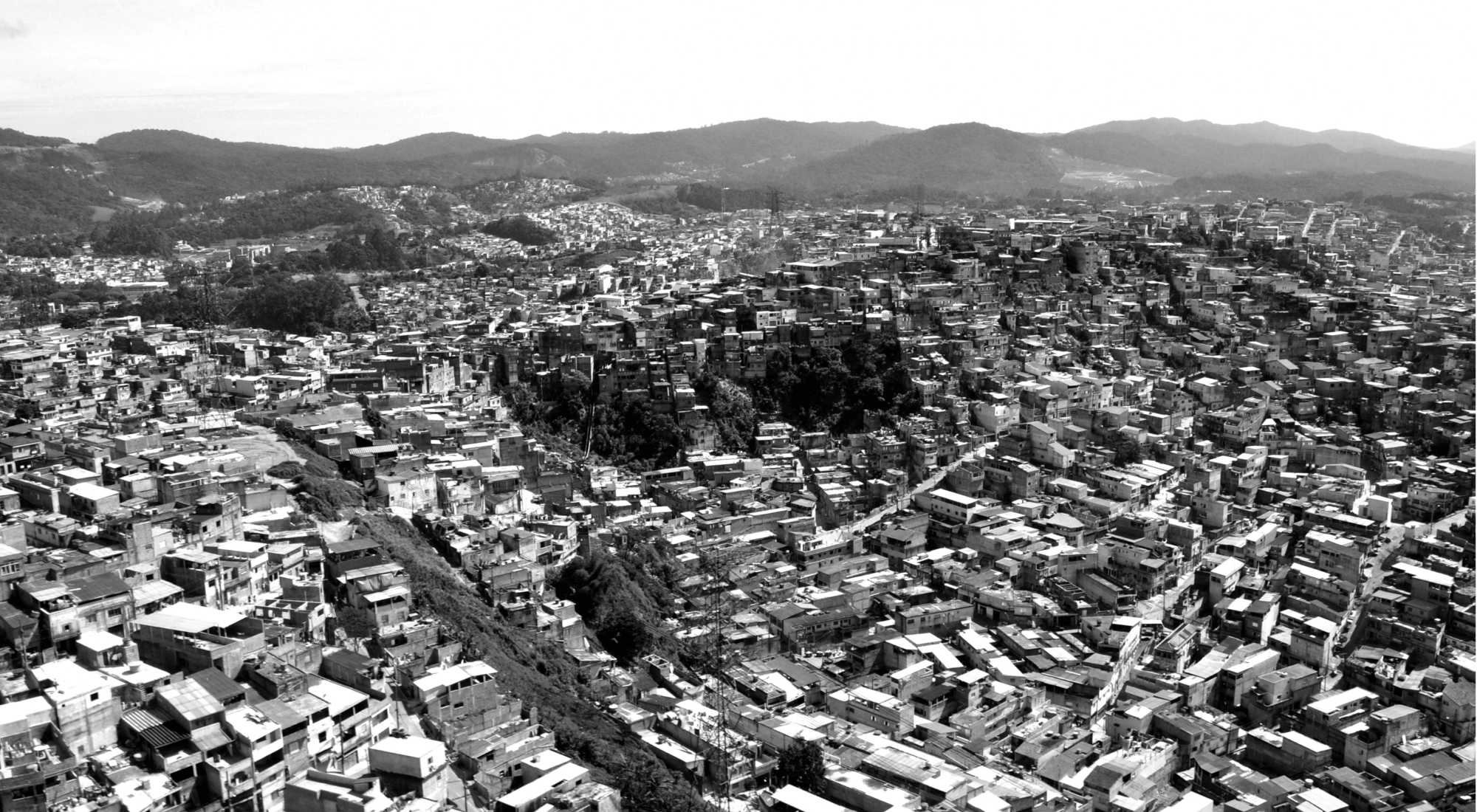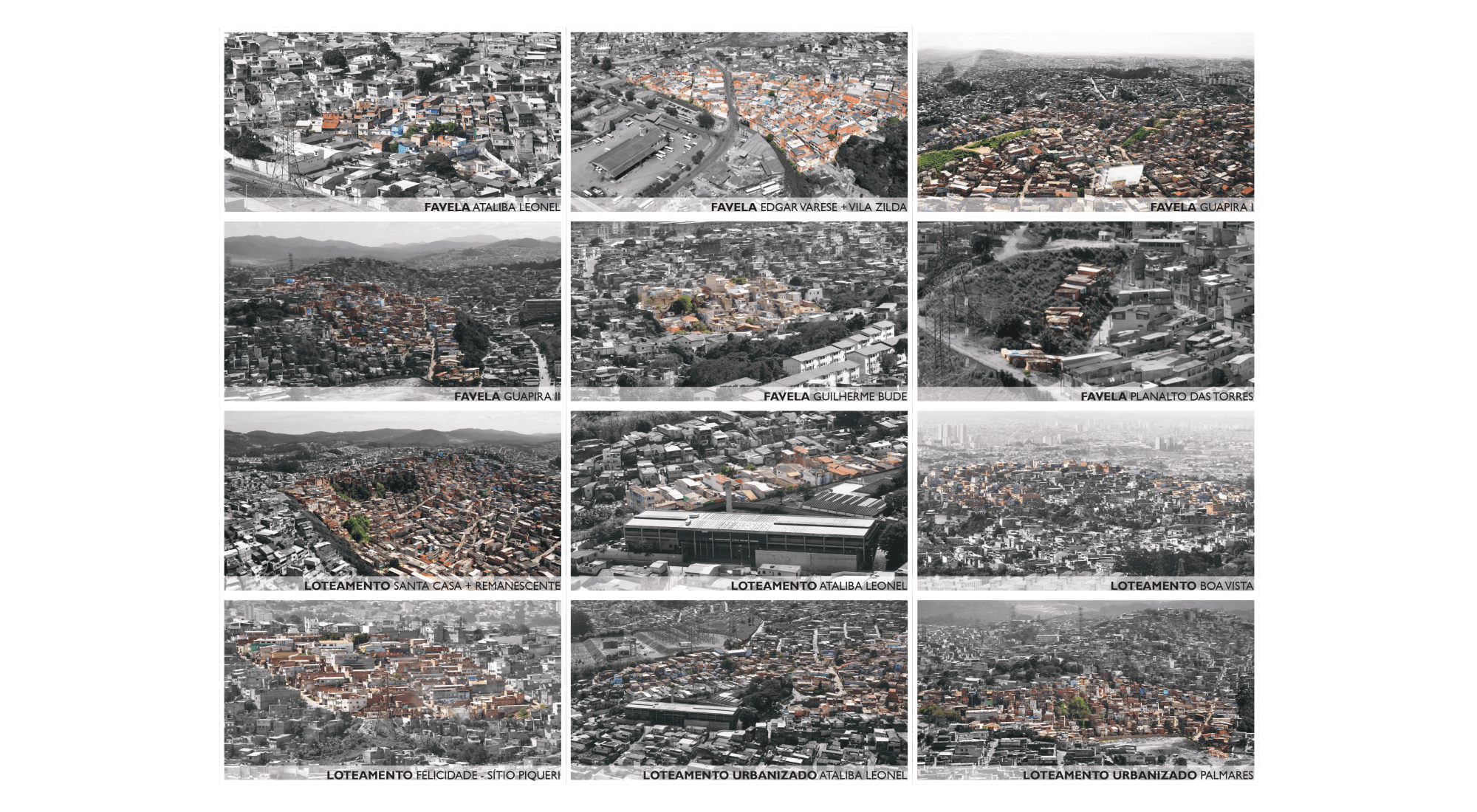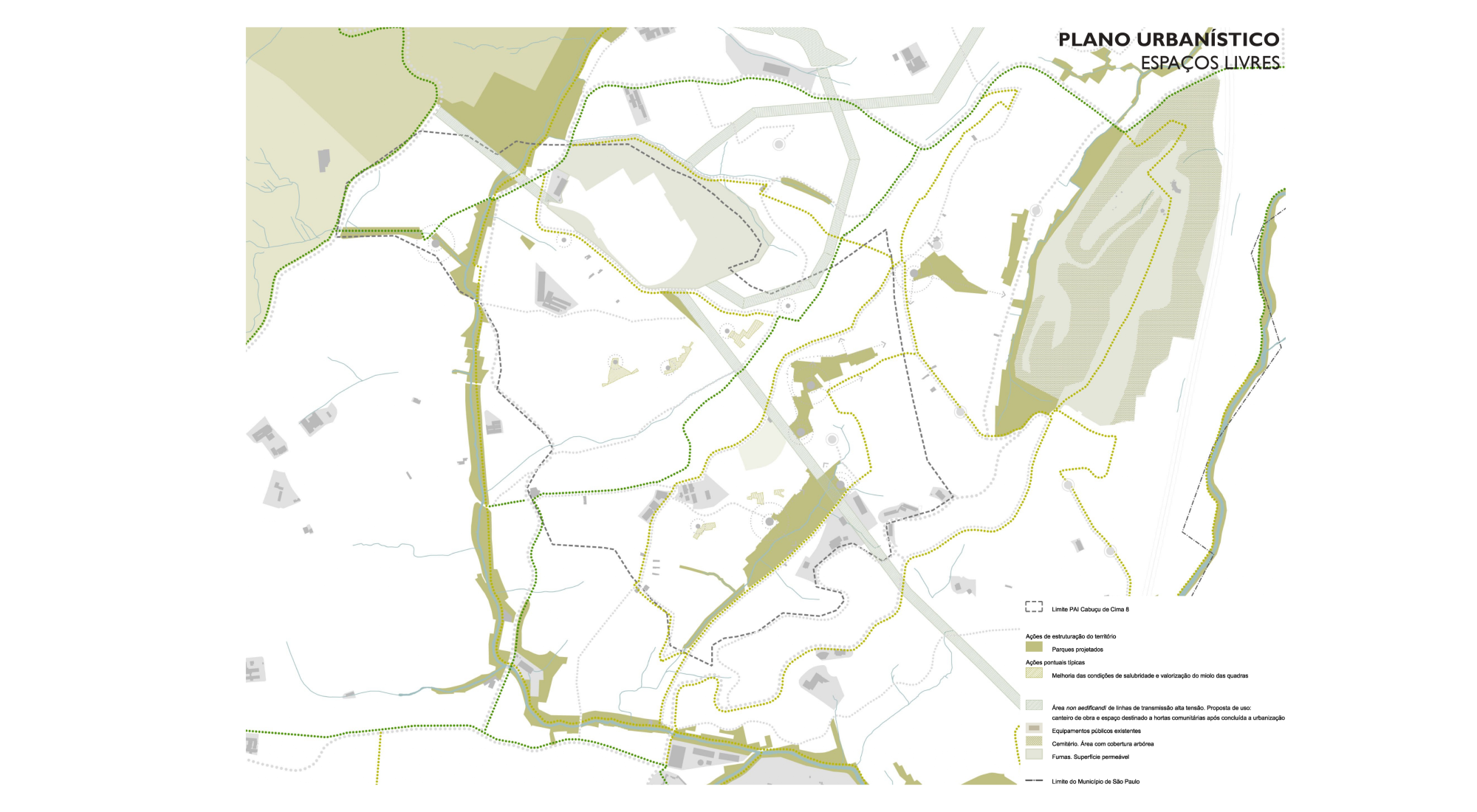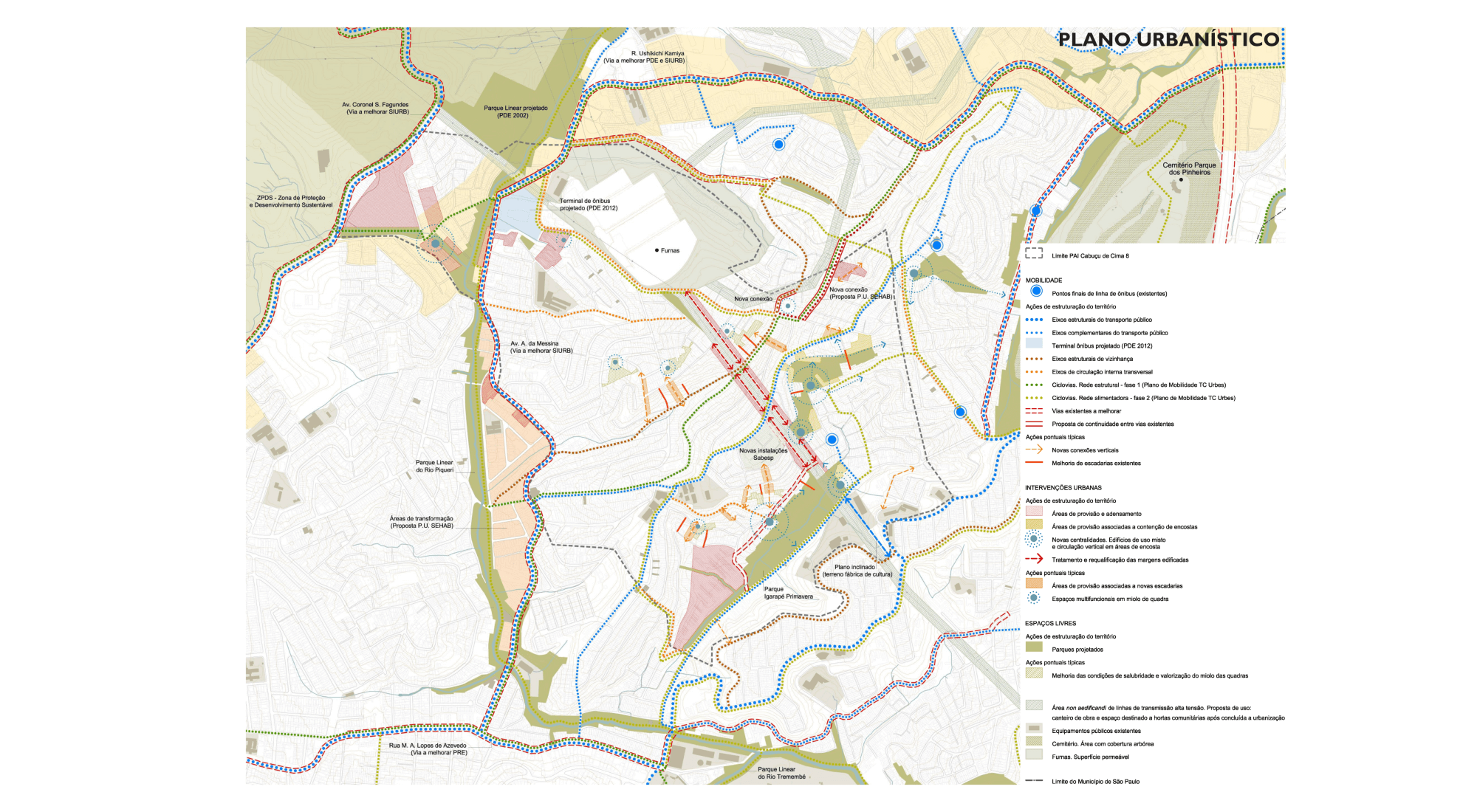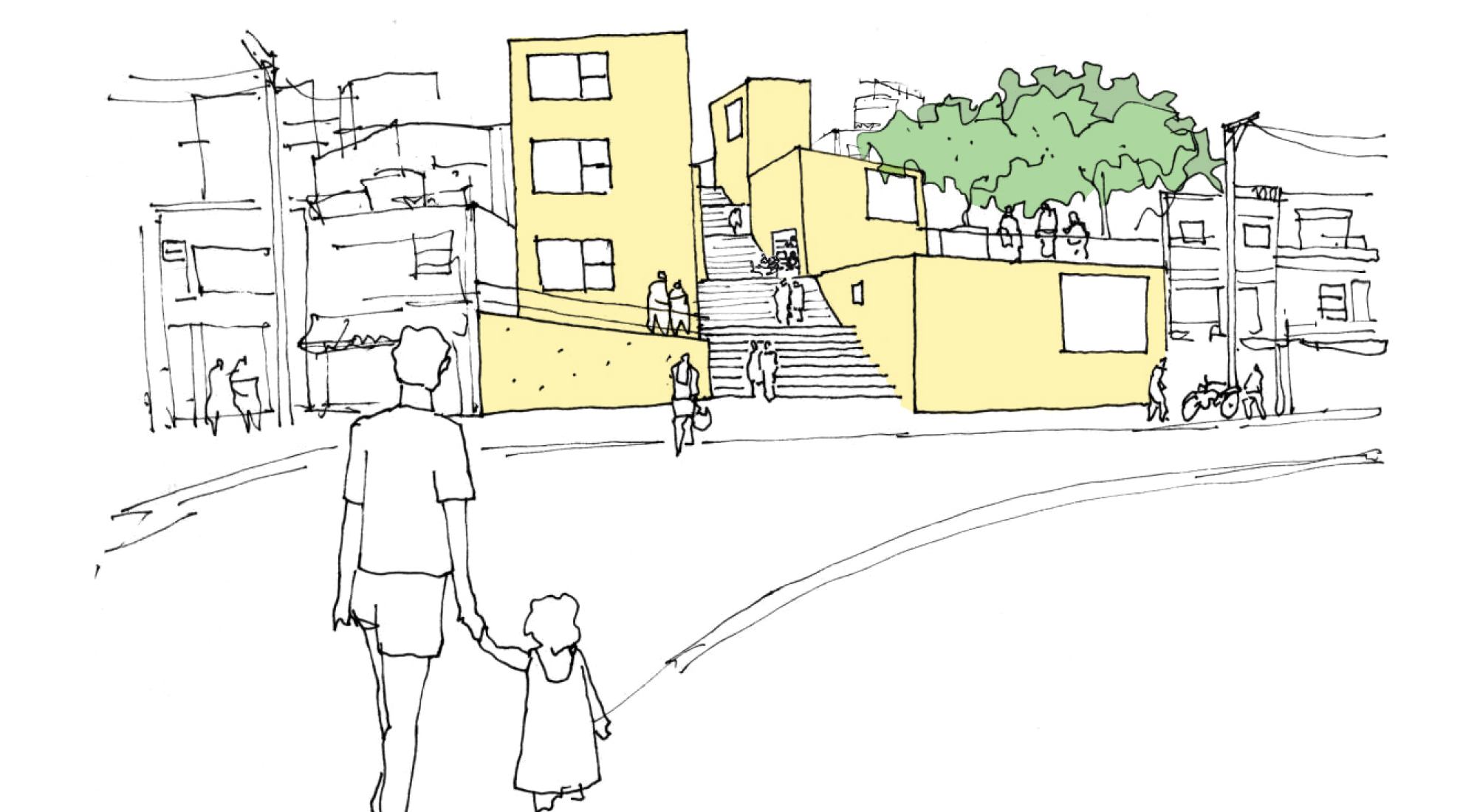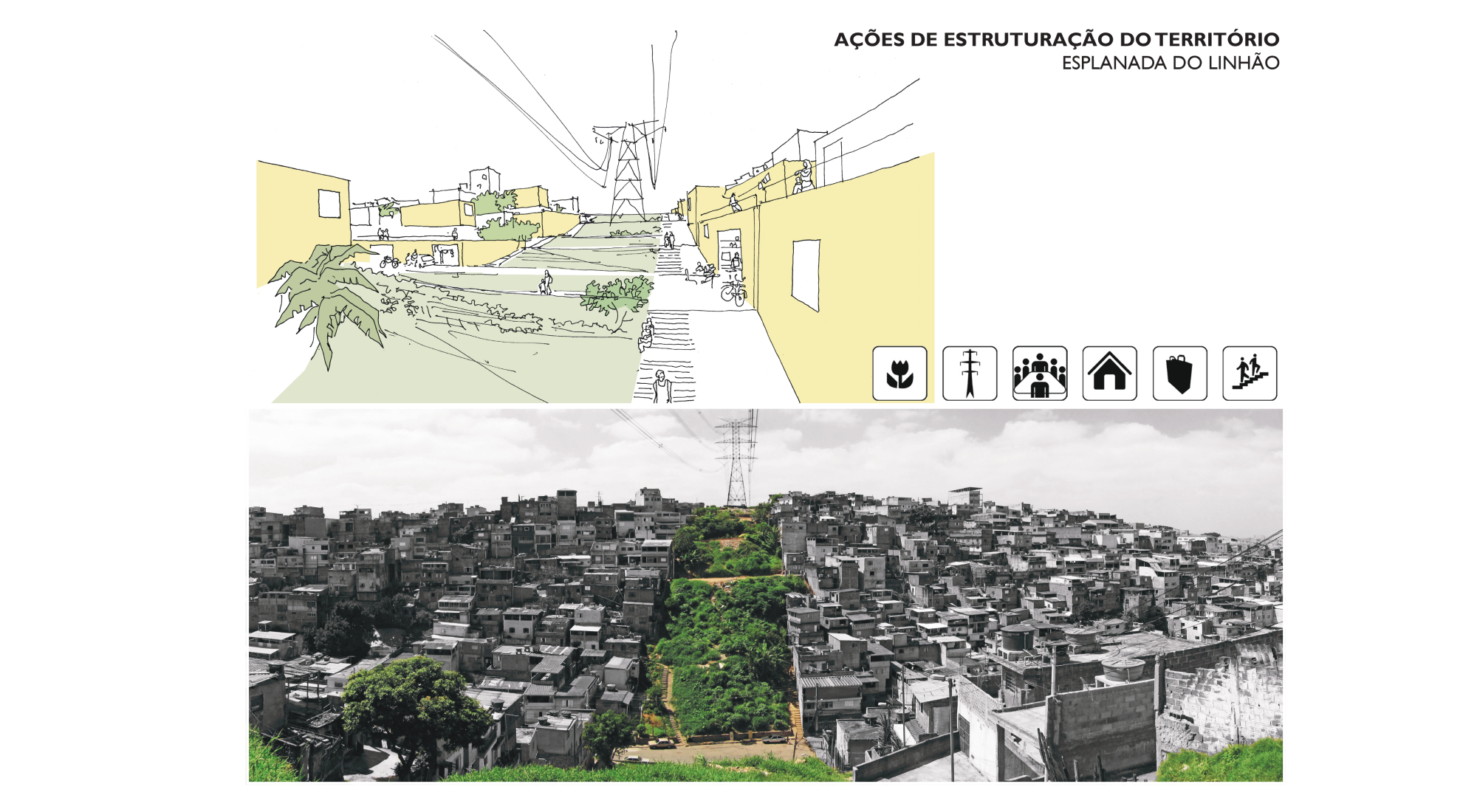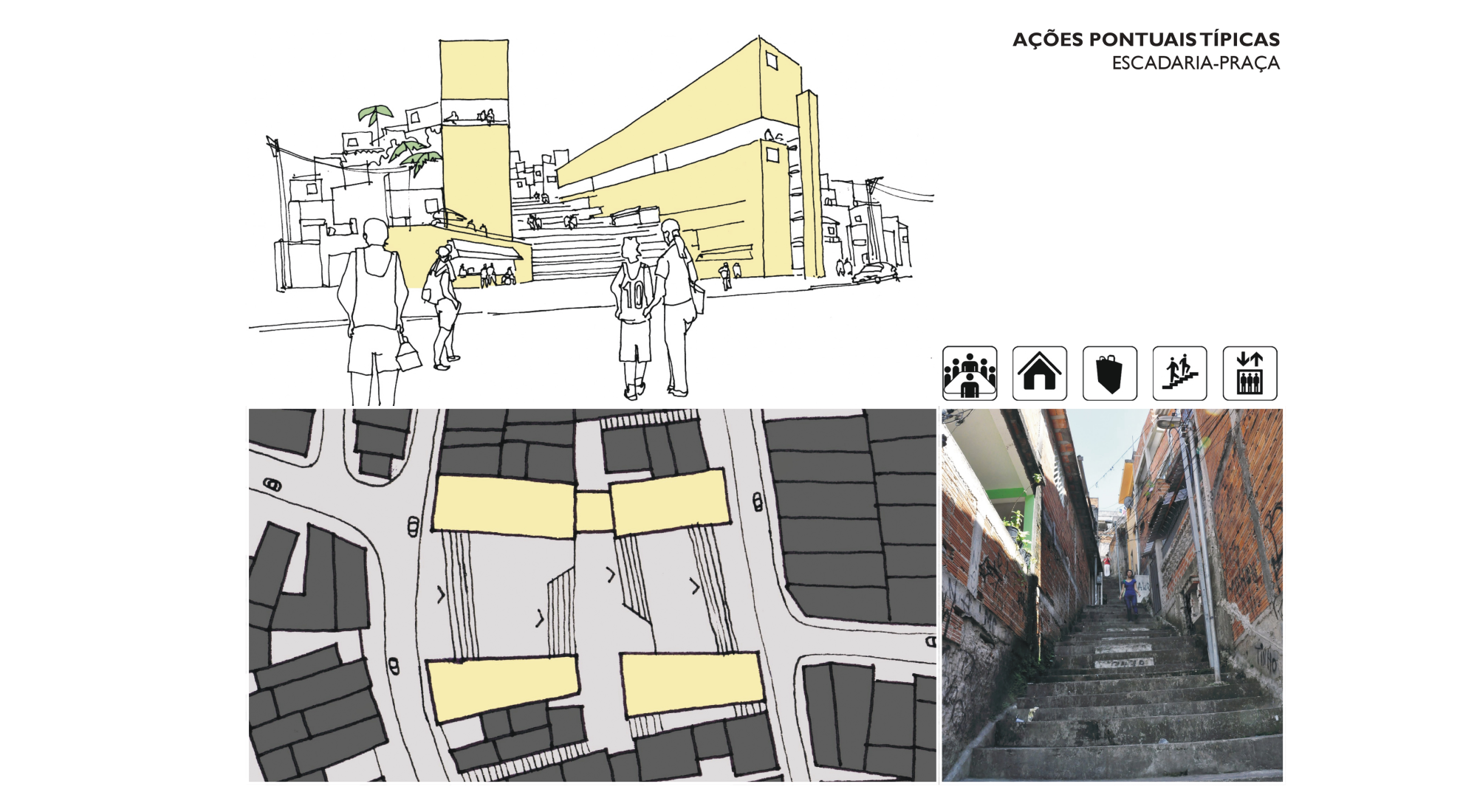The Cabuçu de Cima 08 Integrated Action Perimeter is located near the northern edge of the metropolis' urbanized area and its relations with its surroundings are concentrated on the south and east vectors. The presence of the Furnas substation cuts through the territory which, except for the strips under the high voltage lines, has very few unoccupied areas within the ZEIS. The settlements make up a fragmented territory characterized by a lack of basic infrastructure and public spaces and by the environmental compromise of water resources, with a large number of units located in risk areas. The proposal developed is organized through two complementary types of interventions called Territorial Structuring Actions (AET) and Typical Specific Actions (APT). The TSAs are a result of the association between infrastructural works (watercourse recovery, installation of trunk collectors) and the creation of centralities and public spaces on a regional scale, with the aim of organizing and integrating the surrounding urban fabric. The APTs are characterized as strategic intervention devices and are applicable in multiple locations. Among the AET's proposed are the creation of the Igarapé Primavera Park, located along the stream and street of the same name, the consolidation of Ushikichi Kamiya Avenue as a structuring axis through housing densification and the installation of public equipment and services, and the creation of urban vegetable garden systems located under the high voltage lines. The APTs are used to recover slopes, restore streams and springs and create Neighborhood Centers that combine housing, services, commerce and vertical circulation devices. All the strategies developed use the concept of Positive Balance Operations, where the number of housing units created is always greater than the number of units removed.
Projects
Plano Urbanístico Cabuçu de Cima 08
Techinical facts
São Paulo, SP | 2011
Renova SP Competition (Group 2) Cabuçu de Cima 8 - Awarded 1st place
H+F arquitetos + Marcos Acayaba
Eduardo Ferroni, Marcos Acayaba e Pablo Hereñú
Danilo Hideki, Ivan Mazel, Luca Mirandola, Marta Pavão, Thiago Moretti, Joel Bages, Tammy Almeida, Carolina Milani, Diogo Cavallari, Eliana Uematsu, Francisco Costa, Camila, Ivan Mazel, Karolina Carloni, Thiago Benucci e Natália Harumi (colaboradores)
